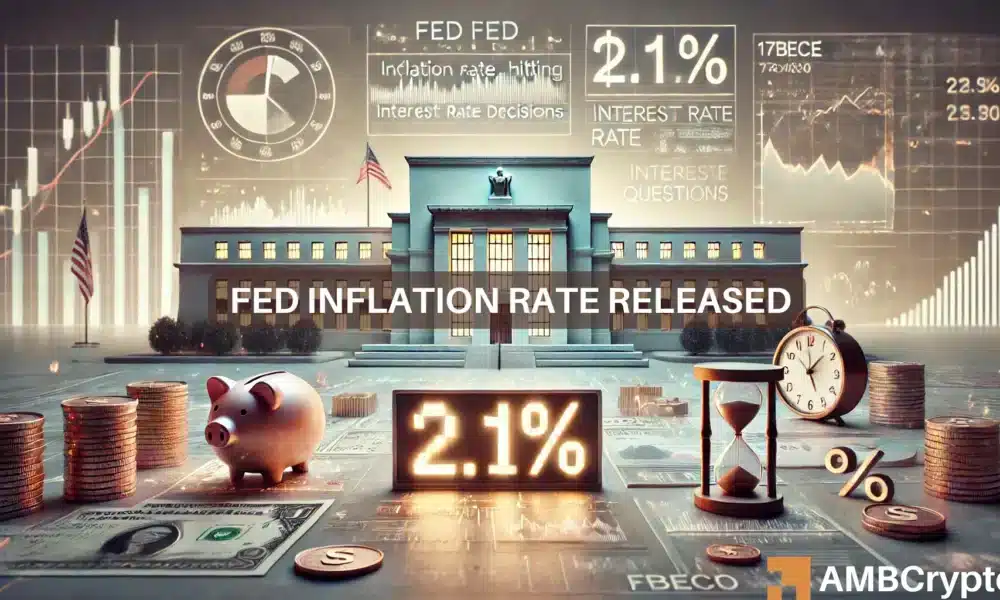The latest statistics reveal that the inflation rate crucial to the Federal Reserve reached 2.1% in September, meeting previously set expectations.
This figure inched notably close to the target set by the central bank.
Scrutinizing the Fed’s Inflation Rate
According to a report from the Commerce Department at the end of October, there was a slight uptick in inflation.
In September, the Personal Consumption Expenditures (PCE) price index increased by 0.2% in a seasonally adjusted manner.
The twelve-month inflation rate standing at 2.1% was in line with predictions put forward by Dow Jones, indicating a consistent progression towards the Federal Reserve’s inflation target amidst ongoing economic evaluations.
The PCE data acts as the primary inflation gauge for the Federal Reserve, with policymakers also monitoring various other indicators to inform their decisions.
The Federal Reserve aims to retain an annual inflation rate of 2%, a goal that has not been attained since February 2021.
Core inflation continues to be a focal point for the Federal Reserve, recording a rate of 2.7%, signaling a 0.3% increase from the previous month.
Furthermore
According to a post by Wu Blockchain,
The Core PCE Price Index for the United States in September stood at 0.3% Month Over Month (MOM), aligning with the expected 0.3%, and the earlier value was revised from 0.1% to 0.2%.
Additionally, it noted,
“The PCE inflation index witnessed its most substantial monthly surge since April, supporting the Federal Reserve’s deceleration in the pace of interest rate reductions following a drastic cut last month.”
As these statistics unravel, there is anticipation in the markets for the Federal Reserve to lower the short-term lending rate at the upcoming meeting scheduled for the following week.
Effects on the Cryptocurrency Market
The recent publication of crucial inflation data prompted profit-taking activities in the cryptocurrency domain. Bitcoin [BTC] surged to $73,000—a peak not witnessed since March.
Nevertheless, the momentum of BTC was short-lived, dropping to $69,263.81 as of the present moment, reflecting a 4.58% decrease within 24 hours.
The cryptocurrency market’s decline did not only affect Bitcoin.
On November 1st, the global cryptocurrency market capitalization dropped to $2.33 trillion, marking a 1.75% decline within 24 hours, as per CoinMarketCap.
In 2022, BTC plummeted below $20,000 amid an overall market downturn triggered by concerns regarding the Federal Reserve’s approach towards interest rate hikes.
However, in 2023, Bitcoin observed a 1% upsurge post the FOMC gatherings, with gains escalating by 3% within a week.
What’s Coming Next?
As the Federal Reserve gears up for its imminent meeting, speculations in the market mount concerning further cuts in the interest rates.
Following a half-a-percentage-point slash in September, adjusting the rate to 4.75% to 5.00%, policymakers are anticipating quarter-point reductions in November and December.
The Federal Reserve is striving for a policy rate of 3.4% by the conclusion of 2025, aiming for stability at 2.9% throughout 2026 and 2027.
This strategy reflects a measured course of action to attain a neutral interest rate amidst prevailing economic challenges.

